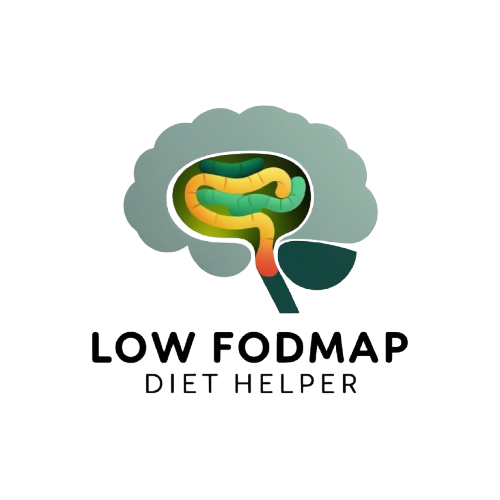I. Introduction
A Low FODMAP diet is designed to reduce the intake of certain fermentable carbohydrates that can trigger digestive discomfort, particularly in individuals with Irritable Bowel Syndrome (IBS) or other gastrointestinal sensitivities. FODMAPs (Fermentable Oligosaccharides, Disaccharides, Monosaccharides, and Polyols) are poorly absorbed in the small intestine, leading to bloating, gas, and abdominal pain. By limiting high-FODMAP foods, many people experience significant relief from digestive symptoms while still enjoying a balanced and nutritious diet.
II. Benefits of a Low FODMAP Diet
A. Reduces Digestive Discomfort
The primary benefit of a Low FODMAP diet is the alleviation of IBS symptoms, including bloating, gas, diarrhea, and constipation. By eliminating hard-to-digest carbohydrates, individuals often experience improved gut comfort.
B. Identifies Food Triggers
This diet serves as an elimination and reintroduction protocol, helping individuals pinpoint which specific FODMAP groups (e.g., lactose, fructose, fructans) trigger their symptoms, allowing for personalized long-term eating habits.
C. Improves Quality of Life
Chronic digestive issues can significantly impact daily life. Many people report better energy levels, reduced pain, and enhanced mood after adopting a Low FODMAP approach.
D. Supports Gut Health
While restrictive at first, the diet encourages the consumption of gut-friendly foods like lean proteins, healthy fats, and low-FODMAP fibers, which can promote a healthier microbiome over time.
III. Foods to Eat

Focus on low-FODMAP foods that are gentle on digestion:
- Proteins: Chicken, turkey, beef, fish, eggs, tofu (firm)
- Vegetables: Carrots, zucchini, bell peppers, spinach, cucumber, eggplant
- Fruits: Strawberries, blueberries, oranges, grapes, kiwi (in moderation)
- Grains: Rice (white/brown), quinoa, oats, gluten-free bread
- Dairy Alternatives: Lactose-free milk, almond milk (unsweetened), hard cheeses
- Nuts & Seeds: Almonds (limited), walnuts, chia seeds, pumpkin seeds
- Healthy Fats: Olive oil, coconut oil, avocado (small portions)
IV. Foods to Avoid (High-FODMAP)
Limit or eliminate foods high in fermentable carbs:
- Dairy: Milk, soft cheeses, yogurt (unless lactose-free)
- Vegetables: Onions, garlic, cauliflower, mushrooms, asparagus
- Fruits: Apples, pears, mangoes, watermelon, dried fruits
- Legumes: Chickpeas, lentils, black beans
- Sweeteners: Honey, high-fructose corn syrup, sugar alcohols (sorbitol, xylitol)
- Wheat & Rye: Bread, pasta, cereals (unless gluten-free & low-FODMAP)
you can check if food is low or high FODMAP using our tool Low FODMAP Food Calculator
V. Sample Low FODMAP Meal Plan
Day 1
| Meal | Food Item |
|---|---|
| Breakfast | Scrambled eggs with spinach & lactose-free cheese |
| Lunch | Grilled chicken salad (lettuce, cucumber, carrots) with olive oil dressing |
| Dinner | Baked salmon with quinoa & roasted zucchini |
Day 2
| Meal | Food Item |
|---|---|
| Breakfast | Oatmeal (with almond milk, chia seeds, & strawberries) |
| Lunch | Turkey lettuce wraps with grated carrot & mayo |
| Dinner | Beef stir-fry (bell peppers, bok choy, rice noodles) |
Day 3
| Meal | Food Item |
|---|---|
| Breakfast | Smoothie (lactose-free yogurt, blueberries, peanut butter) |
| Lunch | Tuna salad (with olive oil, cucumber, rice cakes) |
| Dinner | Grilled shrimp with mashed potatoes (lactose-free butter) |
VI. Common Challenges & Solutions
A. Limited Food Choices
- Solution: Experiment with herbs & spices (e.g., ginger, basil) instead of garlic/onion for flavor.
B. Dining Out
- Solution: Choose plain grilled meats, steamed veggies, and ask for no onion/garlic.
C. Nutrient Deficiencies
- Solution: Ensure adequate fiber from approved sources (oats, chia seeds) and consider a multivitamin if needed.
VII. Conclusion
A Low FODMAP diet can be highly effective in managing IBS and digestive discomfort when followed correctly. The key is to first eliminate high-FODMAP foods, then gradually reintroduce them to identify personal triggers. Consulting a registered dietitian can help tailor the diet to individual needs while ensuring nutritional balance. With careful planning, this approach can lead to long-term digestive relief and improved well-being.


Leave a Reply